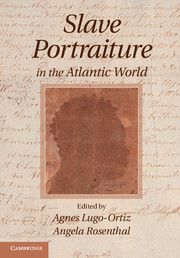18 results
Successful implementation of telehealth visits in the paediatric heart failure and heart transplant population
-
- Journal:
- Cardiology in the Young / Volume 34 / Issue 3 / March 2024
- Published online by Cambridge University Press:
- 31 July 2023, pp. 531-534
-
- Article
- Export citation
Patient and parent-reported outcomes in paediatric ventricular assist device support: a multi-center ACTION learning network feasibility and pilot experience
-
- Journal:
- Cardiology in the Young / Volume 33 / Issue 11 / November 2023
- Published online by Cambridge University Press:
- 19 January 2023, pp. 2258-2266
-
- Article
- Export citation
Contributors
-
-
- Book:
- The Cambridge Dictionary of Philosophy
- Published online:
- 05 August 2015
- Print publication:
- 27 April 2015, pp ix-xxx
-
- Chapter
- Export citation
Copyright page
-
- Book:
- Slave Portraiture in the Atlantic World
- Published online:
- 05 October 2013
- Print publication:
- 30 September 2013, pp iv-iv
-
- Chapter
- Export citation

Slave Portraiture in the Atlantic World
-
- Published online:
- 05 October 2013
- Print publication:
- 30 September 2013
Plates and Figures
-
- Book:
- Slave Portraiture in the Atlantic World
- Published online:
- 05 October 2013
- Print publication:
- 30 September 2013, pp vii-xii
-
- Chapter
- Export citation
Part I - Visibility and Invisibility
-
- Book:
- Slave Portraiture in the Atlantic World
- Published online:
- 05 October 2013
- Print publication:
- 30 September 2013, pp 39-116
-
- Chapter
- Export citation
Index
-
- Book:
- Slave Portraiture in the Atlantic World
- Published online:
- 05 October 2013
- Print publication:
- 30 September 2013, pp 433-468
-
- Chapter
- Export citation
Part IV - Facing Abolition
-
- Book:
- Slave Portraiture in the Atlantic World
- Published online:
- 05 October 2013
- Print publication:
- 30 September 2013, pp 313-432
-
- Chapter
- Export citation
Introduction - Envisioning Slave Portraiture
-
-
- Book:
- Slave Portraiture in the Atlantic World
- Published online:
- 05 October 2013
- Print publication:
- 30 September 2013, pp 1-38
-
- Chapter
- Export citation
Contributors
-
-
- Book:
- Slave Portraiture in the Atlantic World
- Published online:
- 05 October 2013
- Print publication:
- 30 September 2013, pp xiii-xvi
-
- Chapter
- Export citation
Part III - Subjects to Scientific and Ethnographic Knowledge
-
- Book:
- Slave Portraiture in the Atlantic World
- Published online:
- 05 October 2013
- Print publication:
- 30 September 2013, pp 227-312
-
- Chapter
- Export citation
Slave Portraiture in the Atlantic World - Title page
-
-
- Book:
- Slave Portraiture in the Atlantic World
- Published online:
- 05 October 2013
- Print publication:
- 30 September 2013, pp iii-iii
-
- Chapter
- Export citation
Frontispiece
-
- Book:
- Slave Portraiture in the Atlantic World
- Published online:
- 05 October 2013
- Print publication:
- 30 September 2013, pp ii-ii
-
- Chapter
- Export citation
Acknowledgments
-
- Book:
- Slave Portraiture in the Atlantic World
- Published online:
- 05 October 2013
- Print publication:
- 30 September 2013, pp xvii-xx
-
- Chapter
- Export citation
Slave Portraiture in the Atlantic World - Half title page
-
- Book:
- Slave Portraiture in the Atlantic World
- Published online:
- 05 October 2013
- Print publication:
- 30 September 2013, pp i-i
-
- Chapter
- Export citation
Contents
-
- Book:
- Slave Portraiture in the Atlantic World
- Published online:
- 05 October 2013
- Print publication:
- 30 September 2013, pp v-vi
-
- Chapter
- Export citation
Part II - Slave Portraiture, Colonialism, and Modern Imperial Culture
-
- Book:
- Slave Portraiture in the Atlantic World
- Published online:
- 05 October 2013
- Print publication:
- 30 September 2013, pp 117-226
-
- Chapter
- Export citation



